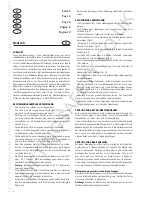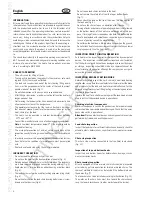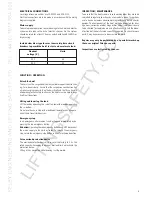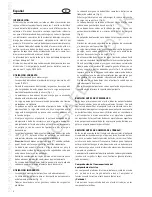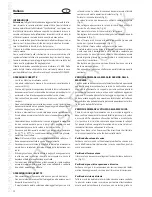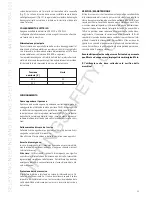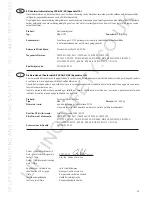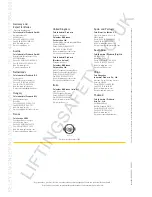
5
ELECTRICAL CONNECTIONS
Local regulations are valid as are VDE 0100 and VDE 0113.
Electrical connections are to be made in accordance with the wiring
diagrams supplied.
Mains supply
To ensure proper operation, to avoid damage to the hoist and electric
system and to reduce the risk of electric shock or fire the system
should be rated for at least 15 amps and should have #16 AWG or
larger wiring.
Include slow blow type fuses or inverse trip time circuit
breakers to permit the hoist to start and accelerate load.
Nominal
Hertz
voltage [ V ]
230
50
400
50
FUNCTION / OPERATION
Attach the hoist
The hoist can the suspended from any suitable support construction
e.g. Yale beam clamp. Ensure that the suspension construction has
a higher carrying capacity than the hoist itself and that it can handle
all operating forces safely. In all cases the hoist must be able to align
itself in all directions.
Lifting and lowering the load
Lift the load by operating the
-button, lower the load by operating
the
-button.
Do not use the chain stop or the load hook/lower block as an opera-
tional chain travel limit devices.
Emergency stop
In an emergency all movement can be stopped immediately by de-
pressing the red emergency button.
Attention:
Operating the red emergency button does NOT disconnect
the mains supply to the hoist or trolley. To release the emergency
stop, rotate the emergency stop button in an anticlockwise direction.
Yale overload protection device
The overload protection device is pre-set at the factory to 1.6 x the
rated capacity. Exceeding the pre-set overload limit will activate the
protection device.
Lifting is thus prevented while lowering is still possible.
INSPECTION / MAINTENANCE
To ensure that the hoists remain in safe working order they are to be
subjected to regular inspections by a competent person. Inspections
are to be annual unless adverse working conditions dictate shorter
periods. The components of the hoist are to be inspected for dam-
age, wear, corrosion or other irregularities and all safety devices are
to be checked for completeness and effectiveness. To test the brake,
a test load of the hoist’s rated capacity is required. To check for worn
parts it may be necessary to disassemble the hoist.
Repairs may only be performed by a specialist workshop
that uses original Yale spare parts.
Inspections are instigated by the user.


